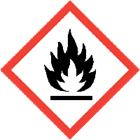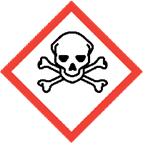Posted by Jacob Huseby on Dec 15th 2022
Liquid Ski Wax | Everything you need to know
Liquid Ski Wax | Everything you need to know
By Jacob Huseby
Originally published December 11, 2020. Updated for the 2022/2023 season.
2023 update: When I had originally written this piece back in 2020, that was the beginning of the transition away from fluorinated waxes in the US. While USSA has phased fluorinated waxes out of sanctioned competition, waxing in other countries remains a bit complicated. As an example: Canada is allowing fluorinated glide waxes in just three competitions and fluorinated kick in everything. Also around this time was the introduction of new liquid waxes. While there was some initial resistance, liquid waxes have now become the norm in almost every wax cabin. Once again, here is my piece on the performance of liquid wax, application, and potential risks. Some of the new waxes contain ingredients that stink (still).
For our readers (hey that’s you!): I hope this can serve as an exhaustive yet not exhausting guide for all questions regarding liquid wax. If you get to the end of the article and you still have questions, feel free to send me an email. JacobH@EnjoyWinter.com.
What is liquid ski wax?
To get an understanding of how a liquid wax works, lets first run through how your skis interact with the snow. When you ski, you are gliding on a thin layer of water that is created through friction between the base of your ski and the snow. Snow can take on many different shapes depending on the weather which will affect your chosen wax of the day. When you apply a wax to your ski, you are putting a layer between your ski and the snow to better create and manage the water that you are gliding on. When you iron on a solid wax and scrape it off, the wax penetrates deep into the base of the ski. When you are using a liquid wax, you are applying a thin layer of wax and evaporating the carrying solvent to leave the wax behind on the base. Liquid wax does get into the base material, but not as deep as an ironed wax job. There can be different variations on application for liquid wax depending on how durable and hard you want your bases to be.
What is liquid wax made of?
In the case of Start Liquid wax, we use a paraffin wax suspended in a solution of rubbing alcohol. When rubbed onto the ski, the solvent will evaporate, and wax will saturate the base material and sit on the top of the ski base. We also offer gel-based solutions for paraffin and our new ceramic finishers. Our gel-based paraffin Ultra Gel is a user friendly and eco alternative that uses a water-based solution mixed with paraffin. Our new ceramic finisher RG Ultra Finish are a finishing powder but suspended in a gel for easy application.

Other brands have their own carrying agents. You should take into consideration their ingredients before using them as some may require extra precaution.
How Liquid Waxes perform:
Are liquid waxes as durable as solid waxes?
The durability of a liquid wax application is going to be dependent a few factors including the preparation of the ski base, skiing conditions, and any additives that you are using. A liquid wax that is applied to a ski that is damaged, dirty, or dry is going to be less durable. To get the most durability out of your liquid wax job, it should be applied to a ski that has hot wax in the base already. In addition, the method of adhering the wax to the ski will affect the durability. While rubbing with a natural cork is the easiest way to adhere the wax to the ski, it is also the least durable. For added durability, more heat is needed so we recommend a quick pass with a roto cork or an iron. Being careful not to burn the base of your skis as there is no layer of solid wax on the surface protecting the sensitive base materials. By following these practices, you can easily do a marathon with your liquid wax and liquid finisher product.
Depending on the snow conditions, your wax selection will have an impact on the durability of your wax job, regardless of what application method you use. A good rule of thumb is to wax on the colder side. This is because waxing too warm can be disastrous on a cold day, while waxing too cold on a warm day is not going to ruin your session. Fresh snow will often have sharp, pointy crystals which may mean it is a good idea to use a colder wax. A general discussion of snow crystal shapes their interaction with the ski base is warranted, but beyond the scope of this article. Dirt will have a negative impact on the durability of your wax job. In dirty snow conditions you should use a wax with molybdenum disulfide or our new RG series ceramic wax as it also will repel dirt. If you want to learn more about molybdenum disulfide, check out my article on molybdenum disulfide here.
Are liquid waxes as fast as solid waxes?
In the case of our liquid wax, the speed is going to be identical to if you would apply a solid block with the same temperature range. The block and the liquid differ in durability because the block saturates the base of the ski at a deeper level than the liquid. Several applications of liquid can be used for greater saturation.

Application:
To apply a liquid wax, first make sure that the gliding zone of your ski is clean from any dirt. While it may not be visible, even fine-grained dust, dirt, or detritus can remain on your base ruining your wax job. We recommend applying some glide zone cleaner to some service towel and wiping down the ski.
After the ski has dried, shake the liquid wax or gel bottle to mix the delivery agent and wax. From there, remove the cap of the bottle and press the sponge down onto the ski to get the solvent flowing. Once you see some has come out, keep pressing and rubbing the sponge on the ski to apply a thin even layer of solvent. Once finished, put the cap back on the bottle to keep the sponge clean.
From here you have a few options. As I mentioned previously, the durability of your wax job is dependent on your application. For liquid wax, you can rub with a cork, roto cork, or a light application of an iron set to the temperature of the corresponding color solid wax. Again, be careful with the iron and roto cork as there is not a significant amount of paraffin to protect the base of the ski from the iron. The final step for would be to take a stiff white nylon brush and lightly polish the surface of the ski. You will want to brush if you want the skis to be fast right out the gate. Otherwise, you can skip brushing if you ski ~1km to polish the surface.
Click here for a no-brainer, efficient demonstration of the alcohol based (petroleum-free!) SG liquid. Totally application time takes a minute per ski with virtually little clean-up, which means you're on the snow with perfectly prepped skis in less than 5 minutes.

Some brands recommend applying a fleece to the surface of the ski after application. While this is the recommended application method for those products, we have determined that our products are best applied with a cork. Start liquid waxes use Propan-2-ol which is a fancy way of saying rubbing alcohol. The waxes are a special solution of alcohol and paraffin that is created through combining them in a pressurized container. Once combined, they are placed in small shoeshine style sponge bottles. While this method is expensive and complicated, this makes for an effective wax that is fast, easy, and safe to apply.
Most other brands are using an aerosol spray with their own delivery agent. Fortunately, while each brand uses a proprietary mix, the Material Data Safety Sheets (MSDS) are publicly available and legally required to be provided upon request. These sheets contain vital information for safe application, storage, and care in case something goes wrong. I encourage everyone to reach out to their local shop and ask for sheets if they are concerned about the safety of their wax. The shop will reach out to their rep, and the rep will provide them the sheets.
Here is what I learned and what you should know from looking over the MSDS:
Know what is in your liquid wax. There is some potentially harmful stuff out there that you want to look out for:
Propan-2-Ol: This is what we use. Another common term for this is isopropyl alcohol or denatured alcohol. This will dry your skin out if you get any on you. We also use alcohol as the carrying agent in our glide zone cleaners.
Naphtha: A liquid hydrocarbon mixture made from petroleum. Wax remover that is typically used on kick wax is a good example of naphtha. This stuff smells and can be absorbed through your skin. Most brands using aerosol liquid waxes are using naphtha. We have naphtha in only a few of our products, mostly our bottles of kick wax remover, but the harm is when it is aerosolized like in a spray can. naphtha contains Benzene which can cause a whole host of health issues. The spray can leave naphtha in the air and can make your wax room, garage, or basement toxic. With enough exposure you will become dizzy and pass out. Long term exposure can cause kidney damage.
Methylene dimethyl ether or Dimethoxymethane: You can recognize this by its smell as it has a chloroform like odor (this stuff reeks). This can be made by mixing formaldehyde and methanol. While this has similar health effects as the naphtha, this is also incredibly flammable. When used from an aerosol spray can, this could fill your wax room with flammable gas. This could also cause harm to your respiratory system once it’s in the air as this will irritate not only your skin but your lungs.
Liquid Ski Wax Safety Tips:
- 1. Wax your skis in a well-ventilated space. This is a good general tip for waxing your skis with liquid or hard wax. While most of us do not have a ventilation hood like a chemist or world cup tech, your local hardware store has respirator masks. I go with the 3M Organic Vapor Pink Filters. Get a full-face mask, it is worth the extra money.
- 2. Be careful with aerosol liquid waxes! Most aerosol liquid wax uses either naphtha, or dimethoxymethane. For a safer application, use a liquid wax that you rub the ski.
- 3. Wear gloves. I recommend the Hestra Beryllium gloves or just any thin nitrile glove.
- 4. Wear an apron, nobody likes wax dust on their pants.
- 5. Store your wax in a temperate space. Liquid waxes, klister, and soft block waxes do not agree with hot attics. I recommend storing wax in a box in a room cooler than 70 degrees.
- 6. Maintain a clean and organized working environment.
- 7. Look at the back of your wax packaging! Look for these symbols and understand the risks of the specific wax you are buying. At the bottom of the article will be the four most common symbols I have seen and what they mean. You should be informed about what you are buying and understand the risks associated with some products.
| Symbol | Danger |
 | Flammable Symbol: Flame |
 | Serious Health Hazard Symbol: Health Hazard |
 | Health Hazard/ Harmful to Ozone Layer Symbol: Exclamation Mark |
 | Acute Toxicity Symbol: Skull and Cross Bones |
Hey! You made it to the end. I hope you enjoyed reading the latest installment in the “Everything you need to know” series. If you have any questions, please send me an email. I will message back, and update the article to answer the question. JacobH@EnjoyWinter.com
The alternative title for this piece was "Time in a bottle: A Complete Guide to Liquid Wax" but that is not as search engine friendly.
Enjoy!

